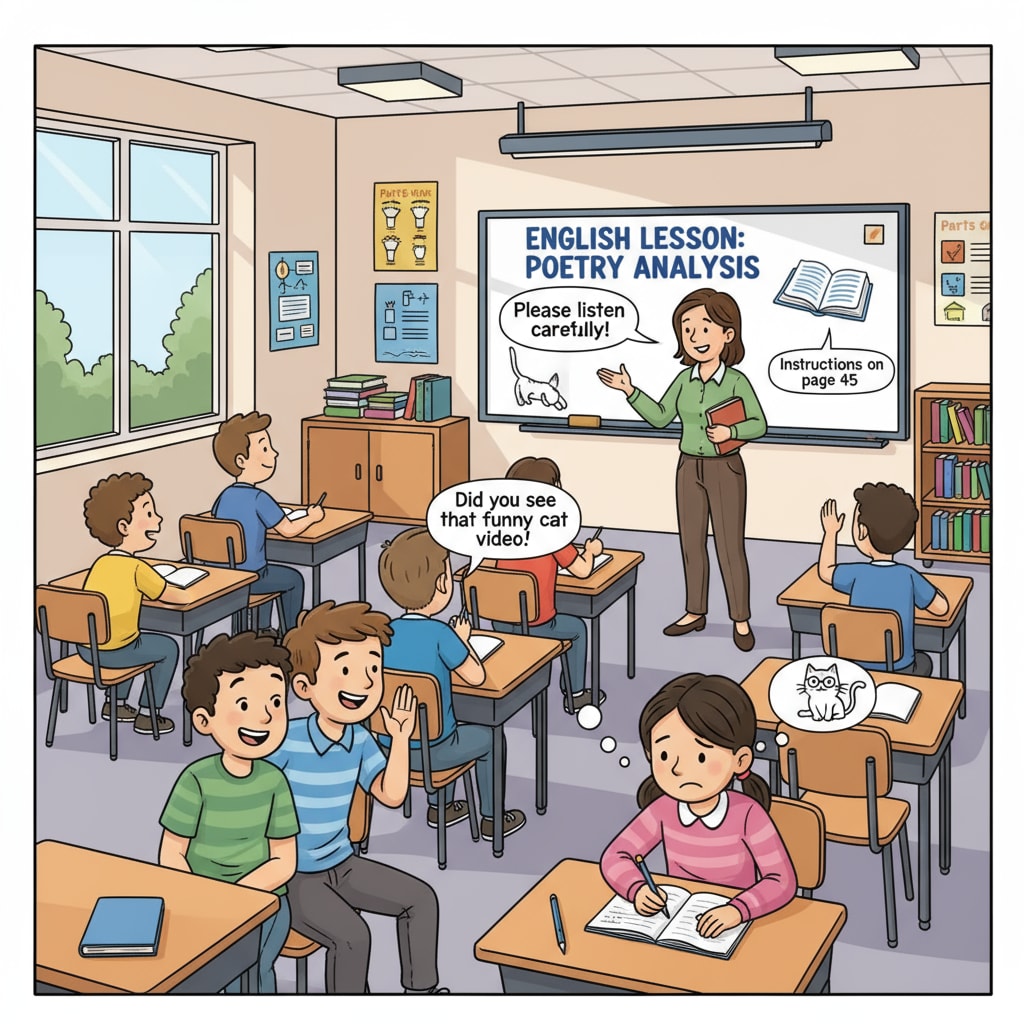Student non – compliance with instructions, teaching dilemmas, and special educational needs are issues that frequently confront middle school English teachers. In a seventh – grade English classroom, the situation of students not following instructions can be particularly challenging. For example, teachers may give clear instructions on a group activity, such as asking students to form groups of four and discuss a given topic, but many students might ignore these directions, causing disruptions to the learning process.

The Root Causes of Student Non – Compliance
There are several reasons for students’ non – compliance with instructions. Firstly, the complexity of the instructions can be a factor. If the instructions are too long or contain difficult vocabulary, students may struggle to understand them. For instance, using advanced grammar or rare words in instructions for seventh – graders can lead to confusion. Secondly, some students may have attention – related issues. According to the American Psychological Association, students with attention – deficit/hyperactivity disorder (ADHD) might find it hard to focus on and follow instructions. Additionally, the classroom environment can play a role. A noisy or disorganized classroom can distract students and make it less likely for them to adhere to instructions.

Impact on Teaching and Learning
The situation of students not following instructions creates significant teaching dilemmas. Teachers may have to spend extra time repeating instructions, which cuts into the teaching time for new content. This can slow down the teaching progress and affect the overall curriculum coverage. Moreover, it can be demotivating for teachers when their carefully – crafted instructions are constantly ignored. For students with special educational needs, this non – compliance can further exacerbate their learning difficulties. Without proper guidance following instructions, they may fall behind in their English language acquisition.
Strategies for Establishing Effective Classroom Guidance
To address this issue, teachers can adopt several strategies. Simplify instructions by using short and clear sentences. For example, instead of saying “You are required to complete this worksheet by following the detailed steps provided at the end of each section, and make sure to use correct grammar and spelling,” say “Complete the worksheet. Follow the steps. Check grammar and spelling.” Reinforce instructions through visual aids. A teacher can use a whiteboard to write down key points of the instructions or use pictures to illustrate what is required. According to TeachThought, visual aids can enhance students’ understanding. Also, create a positive classroom culture where following instructions is rewarded. This can be in the form of small prizes or praise for students who consistently follow instructions.
Readability guidance: The above content uses short paragraphs to present different aspects of the problem. Each H2 section has a clear focus. The use of passive语态 is limited, and transition words like “firstly,” “secondly,” and “moreover” are used to connect ideas. Lists are used to present reasons and strategies for better clarity.


